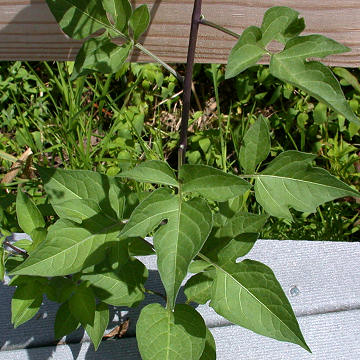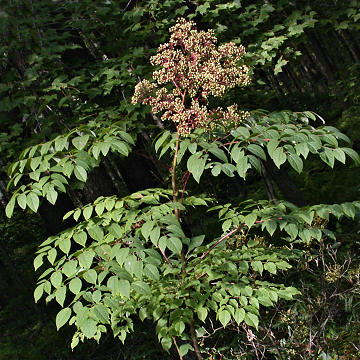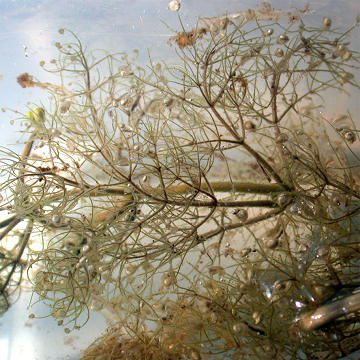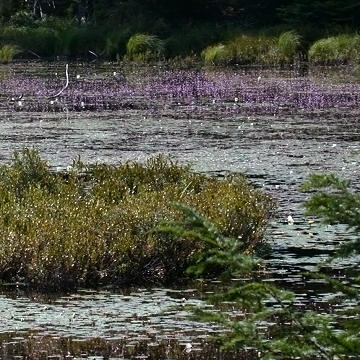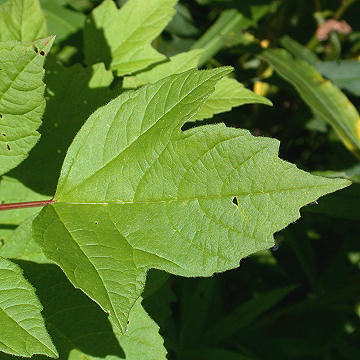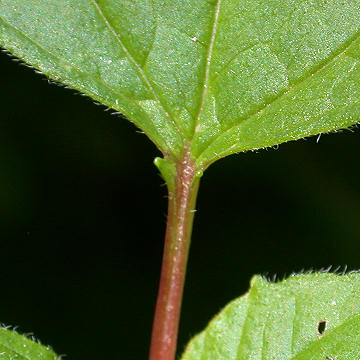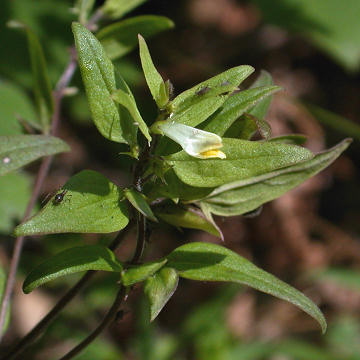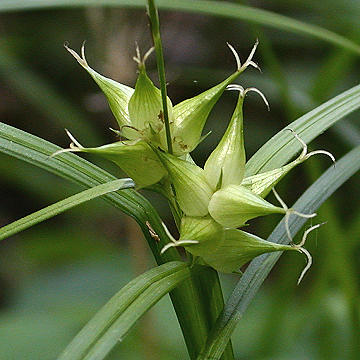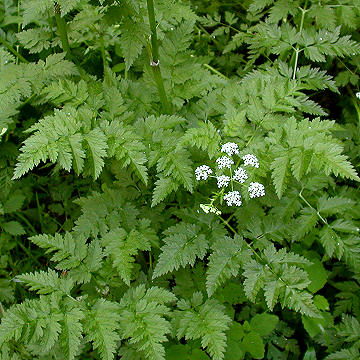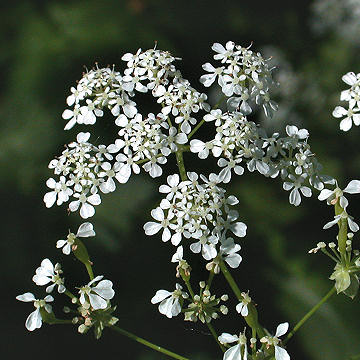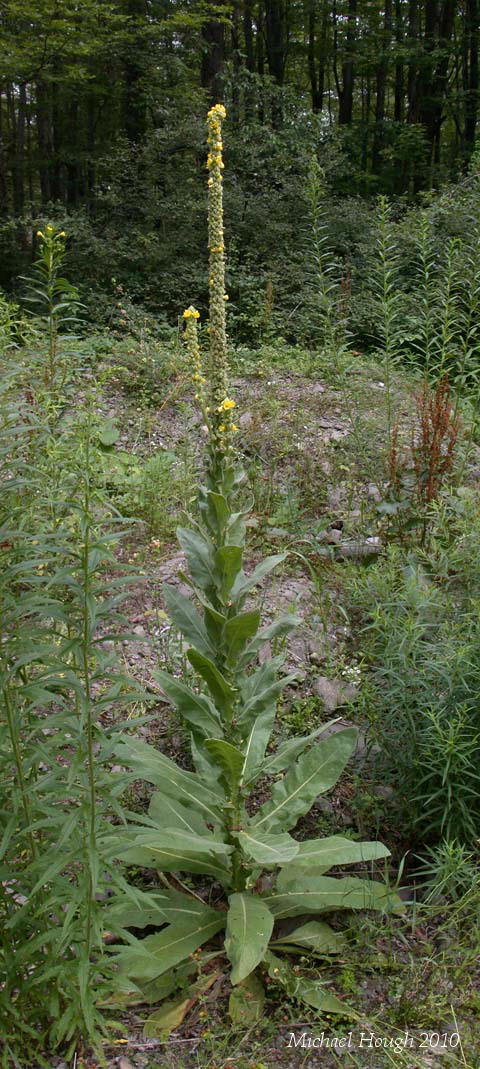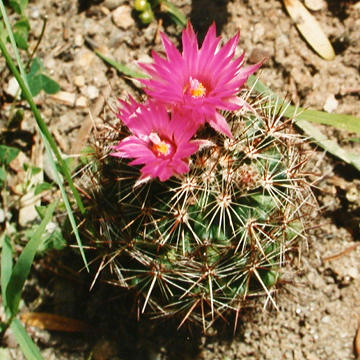Bittersweet Nightshade (Solanum dulcamara) is an herbaceous vine in the potato family (Solanaceae). It is native to Eurasia but has naturalized widely in North America. It occurs in a variety of habitats provided sufficient light is available. Several features aid in identification. First are the purple flowers with five reflexed petals and bright yellow stamens

The fruit matures from green to yellow, orange, and finally bright red and resembles a small tomato (also in the potato family). The plant gets its name from the reputed taste of the fruit, which is said to be bitter at first but later sweet. While the fruits are said to be less poisonous than the rest of the plant, I have never dared to taste one as all parts of the plant contain solanine which is extremely toxic. While poisonings are rare, fatalities have been known to occur.
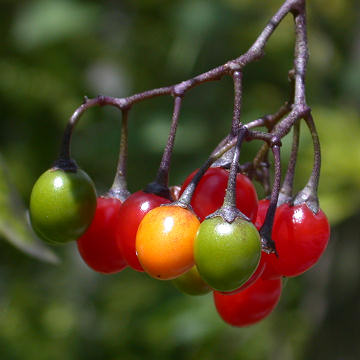
The leaves are somewhat arrow-shaped and often have two or more lobes at the base. The color is dark green and they seldom have evidence of herbivory. The smell of the leaves is perhaps this plant’s most distinguishing characteristic, similar to tomato but much more foul and disagreeable. This trait has come in handy when it has been necessary to identify seedlings in the field.
